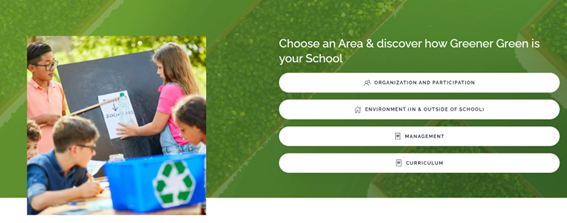Nurturing Young Minds: The Vital Role of Teaching Sustainability and Circular Economy in Primary Schools
In today’s rapidly changing world, instilling a sense of responsibility towards the environment is becoming more critical than ever. And where better to start than with our youngest generation? Teaching sustainability and circular economy principles in primary schools is not just a choice; it’s a necessity. This is the reason why our Greener Green project was born.
But let’s go beyond; we say and know it’s important, but what should we promote in children to increase their awareness and action towards adopting a healthy lifestyle? Here you can read some points:
1. Fostering Environmental Stewardship:
When we introduce sustainability concepts to young minds, we’re sowing the seeds of environmental awareness. Children learn to appreciate the natural world, understand the impact of human actions, and develop a deep sense of responsibility to protect it. This early education lays the foundation for a generation that cares about the planet.
2. Critical Thinking and Problem Solving:
Sustainability education encourages critical thinking. Children learn to analyse complex issues, identify problems, and explore creative solutions. Whether it’s reducing waste, conserving resources, or finding eco-friendly alternatives, these skills will serve them well throughout their lives.
3. Empowering Future Decision-Makers:
The children of today are the leaders and decision-makers of tomorrow. Equipping them with knowledge about sustainability and circular economy principles empowers them to make informed choices. Whether it’s as consumers, voters, or professionals, they’ll be better equipped to drive positive change.
4. Teaching Resourcefulness:
Circular economy education teaches kids the value of resources and how to make the most of them. Instead of promoting a throwaway culture, it encourages resourcefulness, recycling, and upcycling. These skills not only benefit the environment but can also save money in the long run.
5. Connecting Learning to Real-Life Scenarios:
Sustainability and circularity are tangible concepts that can be applied to everyday life. By integrating these topics into the curriculum, children can see the direct relevance of what they learn. Whether it’s through classroom recycling programs or eco-friendly projects, they experience the impact of their actions firsthand.
6. Inspiring Innovation:
Children are naturally curious and imaginative. Teaching them about sustainability and circular economy concepts can spark their creativity. They may develop innovative solutions to environmental challenges or even pursue careers in green industries, contributing to a more sustainable future.
With the Greener Green assessment tool and the content platform, we assist teachers and students in all the aspects mentioned above. We encourage you to discover everything we have created, with the help of schools and educators, to support schools in sustainability education. We are currently in the final testing phase of these two tools, which we hope you will find enjoyable! Let’s go green!
National Report of the sustainable education in Spain
With Greener Green we want to create a learning platform to improve the sustainable education of primary school children. We seek engagement not only of students, but also of their teachers and their parents.
Where the project stands
To start preparing and planning the training platform, it is essential to observe how is the education in sustainability of the different European countries. At this stage of the project, each country is making its national reports, and multiple meetings are being made so as to exchange results, and information about the different countries.
To make the reports, firstly, it has been made an investigation of the laws and institutions that fight for a sustainable education to see the situation of the countries. Secondly, it has been used surveys and focus groups with students, teachers, and parent. All this research and these techniques are helpful to see which are the strengths and weaknesses of education for sustainability in each country.
Once all the National Reports have been done, a global one will be drawn up in order to analyse how is the education in sustainability in the primary education schools of Europe. This will be published in the end of august, and the conclusions drawn, will help on knowing the degree of sustainability in schools, what is the way to create the Greener Green platform, and what content is necessary.
Current situation of sustainable education in Spain
The national report of Spain describes how education laws have addressed the terms of environmental education and sustainability over the years. In addition, it exposes the most important institutions in the country that work to get green schools and that are committed to the environment. Also, you can find the results and conclusions drawn from the focus groups, the surveys and all the research in general.
It has been observed that the concept that it is most known by the different audiences is recycling. Even there is a positive assessment of the initiatives, there is not a positive implementation of them.
Click here to read the full report:



 Financé par l’Union européenne. Les points de vue et avis exprimés n’engagent toutefois que leur(s) auteur(s) et ne reflètent pas nécessairement ceux de l’Union européenne ou de l’Agence exécutive européenne pour l’éducation et la culture (EACEA). Ni l’Union européenne ni l’EACEA ne sauraient en être tenues pour responsables.
Financé par l’Union européenne. Les points de vue et avis exprimés n’engagent toutefois que leur(s) auteur(s) et ne reflètent pas nécessairement ceux de l’Union européenne ou de l’Agence exécutive européenne pour l’éducation et la culture (EACEA). Ni l’Union européenne ni l’EACEA ne sauraient en être tenues pour responsables.